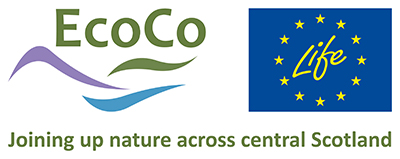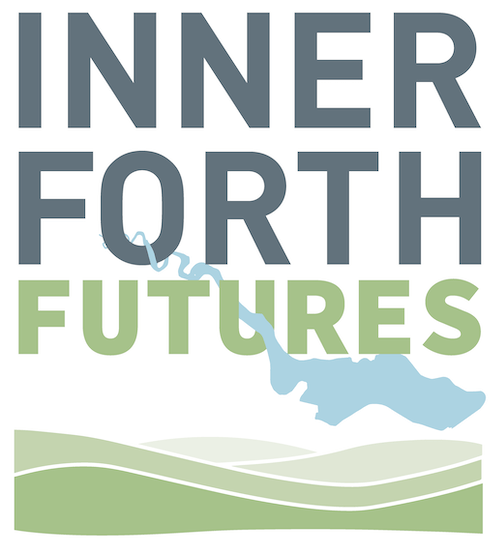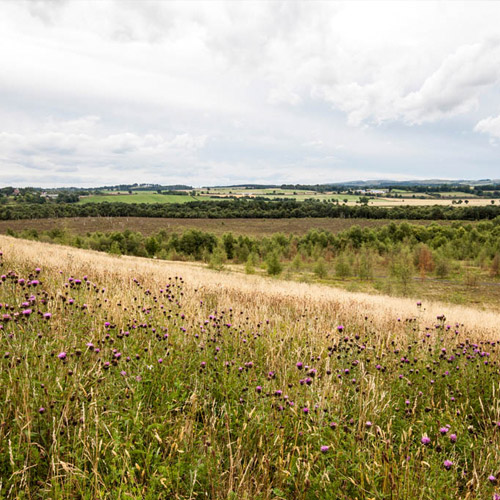Wetter Moss!
Wester Moss is located in the carse of Stirling, adjacent to Fallin Bing. The 30ha nature reserve is designated as a SSSI for its expanse of lowland raised bog habitat, which is a haven for the large heath butterfly (Coenonympha tullia). Wester Moss is a remnant of the far-larger expanse of peatland that would have once covered the valley floor and been influenced by the changing flow of the Forth. Today only rainwater feeds the bog and the surrounding birch and pine woodlands contain sedges and bog-mosses which are adapted to live in waterlogged nutrient-poor conditions. Despite the Moss having been affected by past attempts at drainage, peat cutting, and damaged by dumped waste from the adjacent Polmaise colliery, it is fighting back, with the current condition status given as unfavourable recovering condition.
Conserving this area is vital, as lowland peat bogs are an increasingly rare thing - most existing bogs in Scotland are located in the Highlands and to the west, where rainfall is higher. 90% of bogland that was originally in the area has already been lost. Not only does it create a vital habitat for wildlife (especially rare species like the Large Heath butterfly or the Bog Rosemary plant, which struggle to survive elsewhere), a healthy bog can also provide 'ecosystem services' for the nearby area, including carbon and water storage, and flood prevention.
With Butterfly Conservation and Stirling Council, this project aimed to safeguard the wildlife interests of Wester Moss by reducing the rate of water loss.
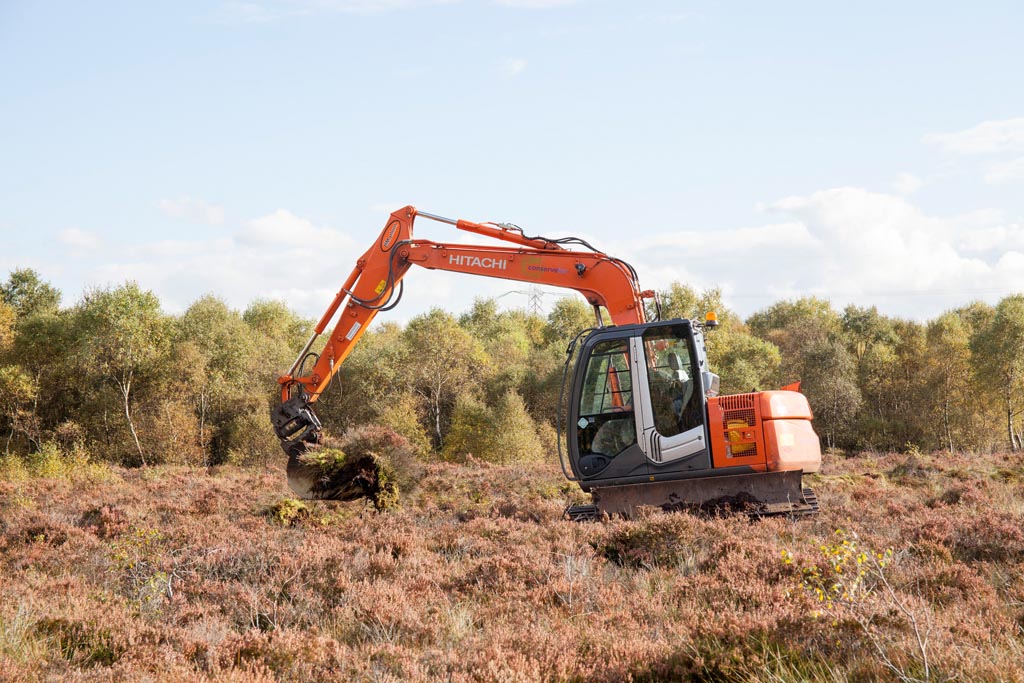
Volunteer groups created dipwells to help Butterfly Conservation gain a greater understanding of the dynamics of the site. A digger then created a 500m bund that sweeps round the southern edge of the Moss in a large arc. The bund is helping to stop water from draining away – and it is water that’s essential to the health of lowland raised bogs like Wester Moss. Butterfly Conservation Scotland hopes that by making the Moss wetter it will encourage more sphagnum mosses, the building blocks of the bog, to grow, and prevent trees and scrub from invading and shading out this vital ingredient of this rare habitat. This in turn will encourage the wildlife that relies on it to flourish, including rare butterflies and moths like large heath butterfly.
Volunteers started work to build on the success of the bund between 2016 and 2018. Tasks during bog action days involved the volunteers creating new dams at the south end of the main drain, clearing 100's of conifer saplings and shrubs that suck moisture from the bog and shade out delicate bog plants if allowed to grow bigger, and 'seeding' some of the newly created pools with sphagnum mosses. The photos below show Stuart Bence seeding one of the pools, and a group of volunteers working on the construction of a plastic dam.
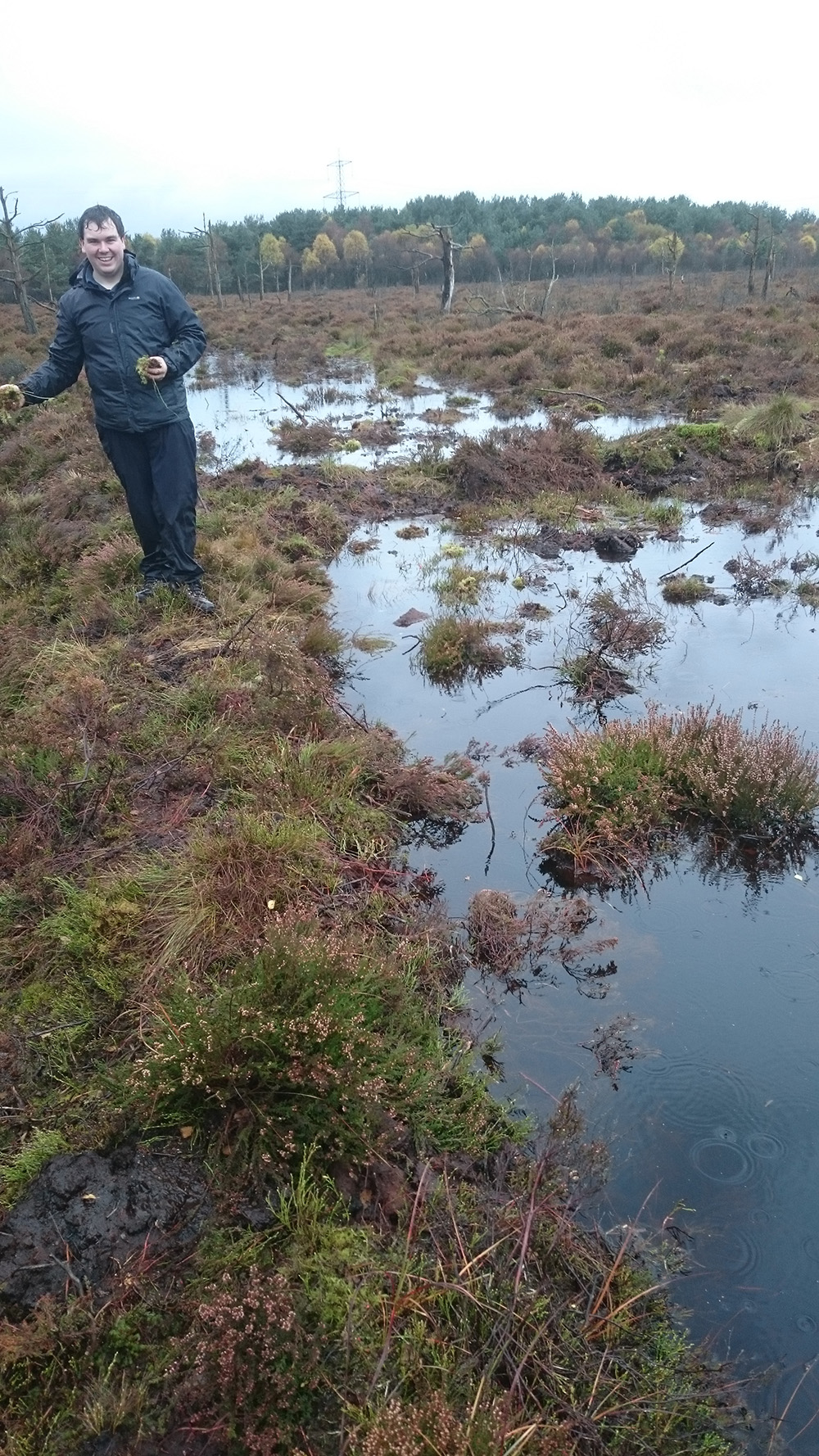
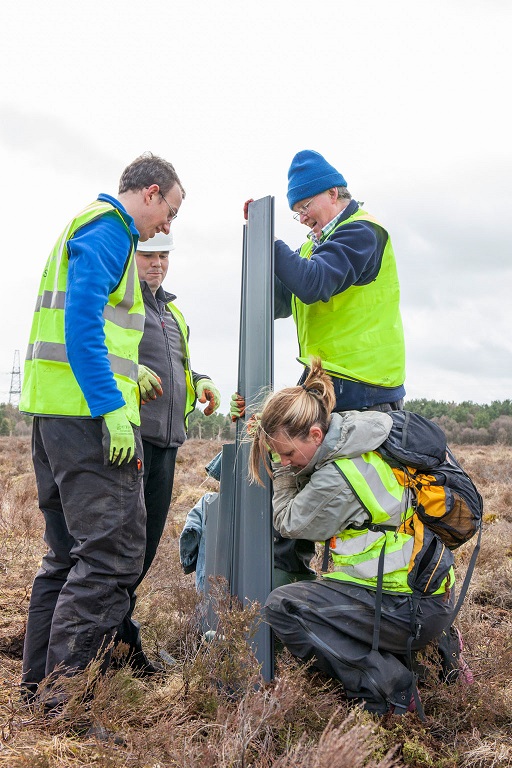
The work of volunteers throughout the project definetely paid off, as Butterfly Conservation were pleased to note in September 2016 not only the sightings of the Large Heath butterfly, but of several species of dragonfly. These included Common Hawker, Common Darter, Black Darter and Emerald Damselfly. All these species are confirmed to be breeding on the site, and there has been a further siting of a Large Red Damselfly, showing the site is already proving itself a fantastic habitat for all kinds of wildlife. The pictures below are courtesy of Butterfly Conservation and were all taken at the bog.
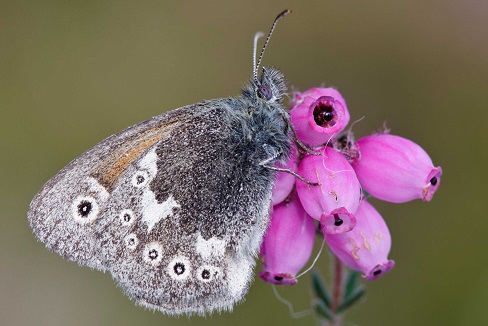
Large Heath butterfly
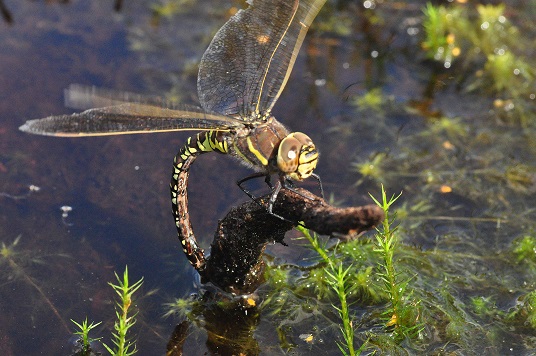
Common Hawker
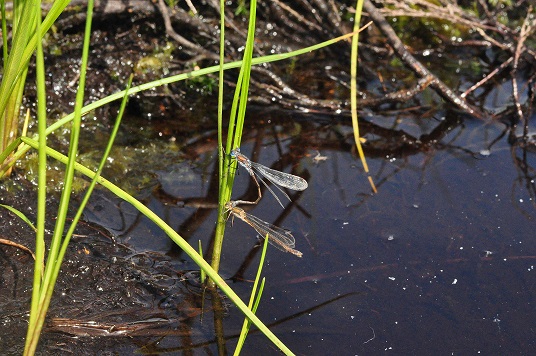
Emerald damselflies
By showcasing the restoration of this peatland site we hope to renew pride in the wildlife interests available on the doorstep of the local community. This project is part of IFLI's Inner Forth Wetland Network, our way to ensure that the wetland habitats of the Inner Forth are sustainably thriving.
To find out more about Wester Moss at Fallin near Stirling, and to see when events and work parties are happening there, visit the Butterfly Conservation webpage. If you are interested in other conservation volunteering with Butterfly Conservation, please contact scotland@butterfly-conservation.org.
This project was also supported by the LIFE financial instrument of the European Community through EcoCoLife:
